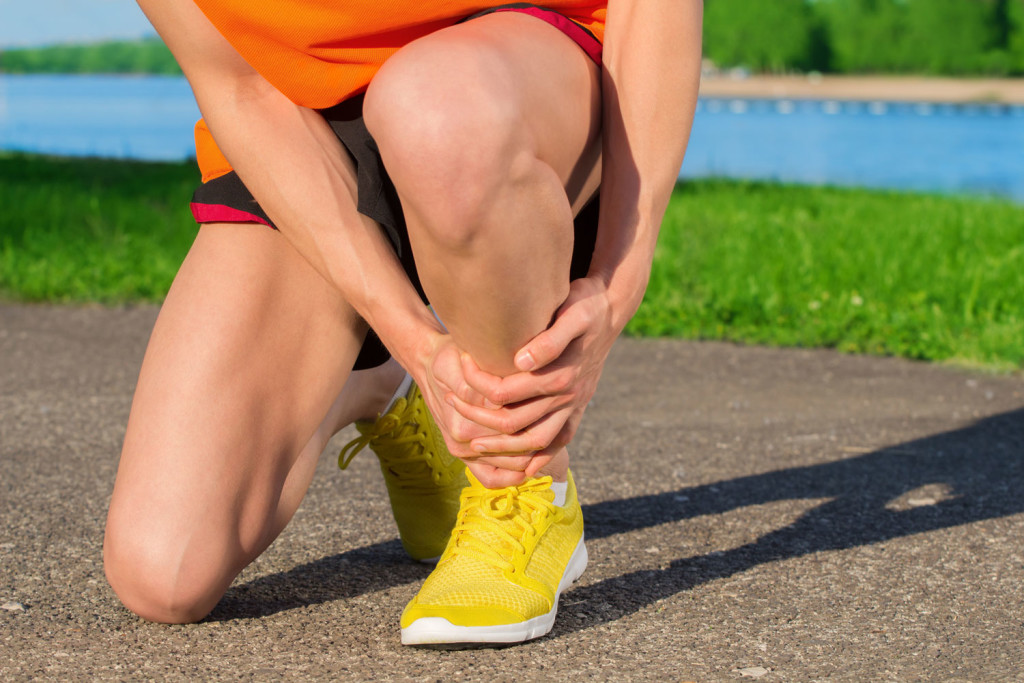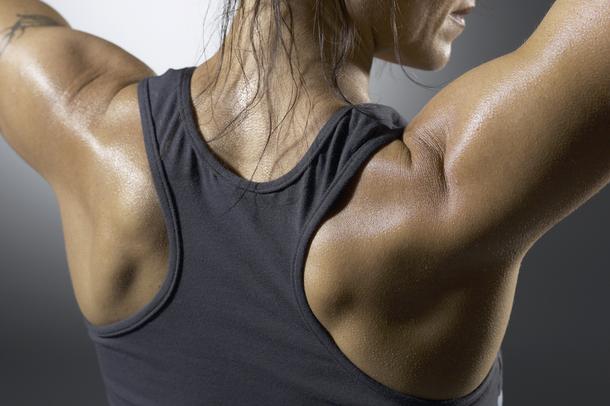Dear Patient/Friend,
 Health Care is changing. There is no denying that decisions made in 2010 regarding patient care will impact every United States citizen. In the spirit of this change, we are now CORE PHYSICAL MEDICINE. To facilitate our integrative, multi-disciplinary model, we have added Oscar Molina, M.D. as our new Medial Director in Coppell, Flower Mound and Keller. Dr. Molina brings 14 years of experience in the treatment of sports injuries to the CORE team. At our Irving location, our affiliation with Tiena Health continues to remain strong. Further, we will be in-housing specialists such as orthopedic/neurosurgeons, podiatrists, and pain doctors for convenient access and a collective approach to your health.
Health Care is changing. There is no denying that decisions made in 2010 regarding patient care will impact every United States citizen. In the spirit of this change, we are now CORE PHYSICAL MEDICINE. To facilitate our integrative, multi-disciplinary model, we have added Oscar Molina, M.D. as our new Medial Director in Coppell, Flower Mound and Keller. Dr. Molina brings 14 years of experience in the treatment of sports injuries to the CORE team. At our Irving location, our affiliation with Tiena Health continues to remain strong. Further, we will be in-housing specialists such as orthopedic/neurosurgeons, podiatrists, and pain doctors for convenient access and a collective approach to your health.
In this quarterly newsletter, one will see a spotlight on our Keller location and one of our professional athlete patients. Read a great article written by Will Benton, our Director of Exercise Physiology, to get a better understanding of what Core muscle integrity is and its importance. Lastly, in staying current, we are now on Facebook. Click below to become a fan and stay up to date on all of our happenings.
Much has changed since we opened in 1996, but one thing has not: personal service. As always, our team is ready to assist in your diagnosis, treatment, and rehabilitation of neuromusculoskeletal disorders. I invite your feedback at drward@corecpt.com and wish you health and happiness. Cheers.
Sincerely,
Dr. Stephen M. Ward
Core Stabilization Training
By: Will Benton, Director of Exercise Physiology
What is the “Core”? The core is a term loosely tossed around that most people have grown familiar with if they have spent much time in a gym, or any other type of fitness environment. The most common meaning in this setting is no more than a simple abdominal crunch, or a low back extension. Normally, a focus on this area is viewed as a fast track to reaching their New Year resolution of six pack abs or a flat stomach. But the benefits of exercising the core extend far beyond reaching the desired “summer body”.
According to Dr. Jeffery Willardson, in his article “Core Stability for Athletes”, “The core of the body is a term used to refer to the trunk or more specifically the lumbopelvic region. Several muscles attach to the lumbar spine or pelvis and may function as stabilizers or prime movers depending on the nature of the task being performed.” The core is responsible for stabilization of the spine, pelvis and shoulder girdle and creates a solid base of support for the body. The muscles this includes are the rectus abdominis, transversus/internal oblique abdominis, external oblique abdominis, the multifidus, and erector spinae.
When looking at how the body functions, one must understand that all parts are connected to something else directly as well as indirectly. When one movement is made, it can affect another area. This is sometimes referred to as a kinetic link or chain. The muscles of the core are what allow all areas of the body to function in sync with one another by setting the frame for good posture, good balance and coordination of movement. Many professionals in the fitness and medical communities conclude that improving the strength of the core sets the foundation to build a healthy, stable and functional body.
When looking at the complete function of the core, we know that it is engaged in just about everything that a person does. This can stretch from the more active example of swimming or swinging a golf club to the most simple of tasks like sitting down or standing up. For the more athletic individual, core training can be catered to aid in the transfer of kinetic energy though the body with motions like throwing or kicking, with less stress placed on the muscles, joints, and connective tissues of the arm (or leg) in order to maintain a high velocity. This type of enhancement is normally done by mimicking the specific movement the athlete must perform. Most common, are free standing exercises done with resistance held in one hand or on one side of the body (know as unilateral). Many of these exercises are also done on unstable surfaces such as stability balls, wobble boards, BOSU balls, and in some cases with only one leg on the ground. By training in this manner the athlete will grow stronger in several planes of motion such as frontal, transverse, and diagonal. These same tactics in exercise have also proven to be extremely effective for building and maintaining a strong and healthy musculoskeletal system for the average person that doesn’t have a desire to participate in a high intensity sport or activity.
Roughly two-thirds of all doctor visits in the United States are based on complaints of aches and pain in the joints or muscles. The most common of these complaints is pain in the low back, or lumbar region of the spine. The cause for this in most cases is normally attributed to weakness of the core musculature which leads to general joint instability in the trunk and pelvic regions of the body.
When looking for a long term solution for this issue one must look to core training as the most effective means of stabilizing the joint or joints. Studies have shown that using the same tactics that professional athletes employ to grow stronger in several planes of motion are also highly effective in treating an unstable low back. This lessens the stress on the joints of both the upper and lower extremities caused by day to day activities. In the physical medicine community it is common knowledge that as one is placed on an unstable surface the degree of core muscle activity is increased proportionately. As the muscles of the core increase in strength through proper technique and a consistent routine, the posture of the individual will begin to improve and lead to less stress placed on the spine. According to Dr. Michael Schnappauf, co-owner of Core Physical Medicine, “the foundation of any shoulder, hip or back rehabilitation protocol starts with strengthening the core.”
So whether your goals are in high intensity athletic competition, getting that perfect summer body or just decreasing the potential risk and pain associated with the joints or muscles caused by normal day to day activities; core stabilization training is the right choice to make. For more information or to learn the right core exercise or program for you, please contact or visit one of the four Core Physical Medicine offices. A Core Exercise Physiologist will be able to advise the best plan of action for reaching you goal. For the patients seeking advice or care in Coppell see Will, for Keller ask for Dan, for Flower Mound contact Matt, and for Las Colinas reach Ryan.

Patient Spotlight
Nathan Chandler
Former Quarterback for Southlake Carroll, University of Iowa, and Buffalo Bills
Q: Mr. Chandler how did you hear about Core?
A: I got to know Dr. Deevers through church and sports. Through conversation he told me he was the Clinic Director of Core Physical Medicine in Keller and that led us to talking sports, and some of our previous sports injuries.
Q: So, you have experienced some sports related injuries?
A: Many, but specifically, from throwing a football for so many years. It led to my shoulder wearing out, becoming weak, and in need of treatment and rehab. Dr. Deevers looked at my shoulder, did a comprehensive exam, reviewed the extent of my shoulder damage on the MRI and referred me to Dr. Kevin Meister of the Texas Rangers for an orthoscopic consultation.
Q: What is the status of your shoulder now?
A: Thanks to Dr. Deevers understanding of the extent of my shoulder problem and the appropriate referral, I had orthoscopic surgery on my right shoulder. Everything went well and I followed up with full rehabilitation of my shoulder with Dr. Deevers at Core. My shoulder is stronger, more stable, and my range of motion is better every day.
Q: How has your experience been with Core Physical Medicine?
A: It has been excellent. It’s not that I throw a football competitively anymore, but I want to be able to do the simple things like play with my 2 boys, and continue playing sports like football, softball, and basketball without limitation. You take those things for granted until you are limited and can’t do the routine things like put on a shirt, much less throw a football. If it hadn’t been for Dr. Deevers, Dan, and Bailey at Core I would probably be still experiencing pain and this loss of function. I am very grateful to them and their very thorough approach to detail with me, and I know with all of their patients.
Q: Would you recommend Core Physical Medicine to those you know or to those who have experienced a similar condition?
A: Absolutely! It’s been a great experience for me and I know that others could and will benefit greatly from the guys at Core.
Meet Dr. Robbie Deevers

Dr. Deevers received his degree in Anatomy and then his Doctorate in Chiropractic in 2008.
Drawing his experiences as a professional baseball player, Dr. Deevers specializes in the examination and treatment of biomechanical and musculoskeletal disorders. He emphasizes a comprehensive approach concerned primarily with restoration of function to the individual, rather than just elimination of symptoms.
Dr. Deevers enjoys competing in sports, fishing, hunting, and traveling. Living in Keller, Texas with his wife, daughter, and son, Dr. Deevers and his family are active in their local church.
Dan Ostrowski
– Enjoys training and competing in Brazilian Jiu Jitsu
– Has his black belt in Tae Kwon Do
– COOPER Institute Certified
– Personal trainer, Biomechanics, and Optimal Performance certified
– Enjoys teaching boot camps
Happy Holidays!

Comments, questions, suggestions…please feel free to contact us directly at any time.
We are here for you.
Sincerely,
Dr. Stephen Ward
drward@corecpt.com
Dr. Michael Schnappauf
drmike@corecpt.com
Tel: 972.393.8067
Fax: 972.393.6959
Web: corecpt.com
 Sport Injuries, including knee injuries, shoulder injuries and even ankle injuries tend to occur in sporting activities. Professional athletes in particular, are prone to injuries due to the excessive wear and tear associated with the demands of competitive sports. The right exercise program to maintain strength, flexibility and stability can help athletes recover quickly after an injury, empowering them to resume athletic activities.
Sport Injuries, including knee injuries, shoulder injuries and even ankle injuries tend to occur in sporting activities. Professional athletes in particular, are prone to injuries due to the excessive wear and tear associated with the demands of competitive sports. The right exercise program to maintain strength, flexibility and stability can help athletes recover quickly after an injury, empowering them to resume athletic activities. Core Physical Medicine Rehabilitation – The Right Choice
Core Physical Medicine Rehabilitation – The Right Choice

















